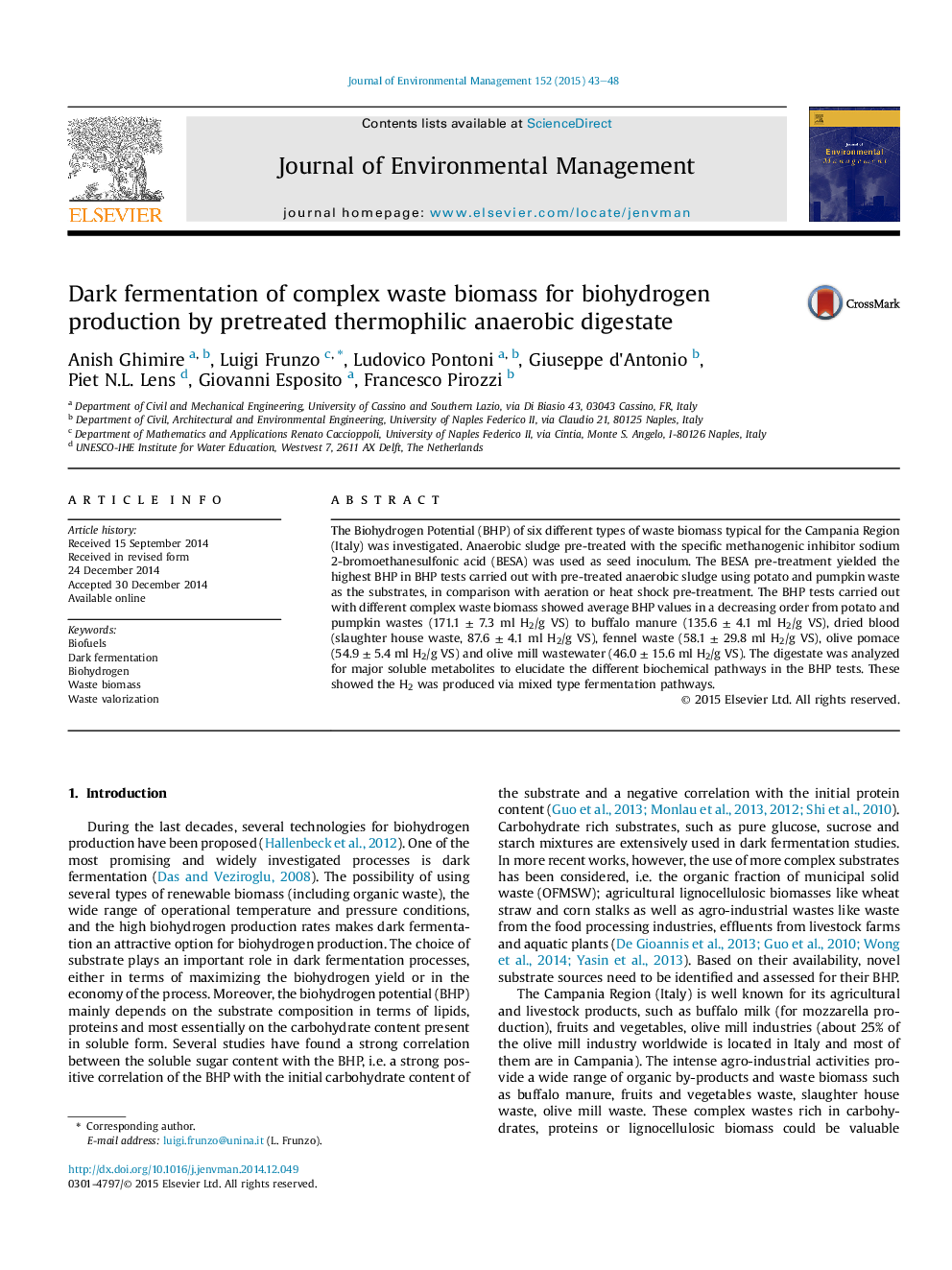| Article ID | Journal | Published Year | Pages | File Type |
|---|---|---|---|---|
| 7482444 | Journal of Environmental Management | 2015 | 6 Pages |
Abstract
The Biohydrogen Potential (BHP) of six different types of waste biomass typical for the Campania Region (Italy) was investigated. Anaerobic sludge pre-treated with the specific methanogenic inhibitor sodium 2-bromoethanesulfonic acid (BESA) was used as seed inoculum. The BESA pre-treatment yielded the highest BHP in BHP tests carried out with pre-treated anaerobic sludge using potato and pumpkin waste as the substrates, in comparison with aeration or heat shock pre-treatment. The BHP tests carried out with different complex waste biomass showed average BHP values in a decreasing order from potato and pumpkin wastes (171.1 ± 7.3 ml H2/g VS) to buffalo manure (135.6 ± 4.1 ml H2/g VS), dried blood (slaughter house waste, 87.6 ± 4.1 ml H2/g VS), fennel waste (58.1 ± 29.8 ml H2/g VS), olive pomace (54.9 ± 5.4 ml H2/g VS) and olive mill wastewater (46.0 ± 15.6 ml H2/g VS). The digestate was analyzed for major soluble metabolites to elucidate the different biochemical pathways in the BHP tests. These showed the H2 was produced via mixed type fermentation pathways.
Related Topics
Physical Sciences and Engineering
Energy
Renewable Energy, Sustainability and the Environment
Authors
Anish Ghimire, Luigi Frunzo, Ludovico Pontoni, Giuseppe d'Antonio, Piet N.L. Lens, Giovanni Esposito, Francesco Pirozzi,
